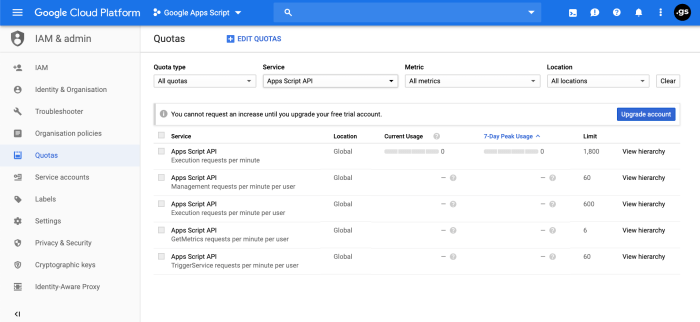Samsung Galaxy S4 Phone Specification
Samsung Galaxy S4: Processor and Memory
Samsung galaxy s4 phone specification – The Samsung Galaxy S4, released in 2013, offered several processor and RAM configurations catering to different market segments and price points. Understanding these variations is key to appreciating the phone’s performance capabilities and limitations.
Processor Variants
The Galaxy S4 featured different processor variants depending on the region and model. Common processors included the Qualcomm Snapdragon 600 and the Samsung Exynos 5 Octa. The Snapdragon 600 was a quad-core processor, while the Exynos 5 Octa offered an octa-core configuration. These differences impacted processing speed and overall phone responsiveness. The Exynos variant, in particular, was marketed for its superior multi-tasking capabilities.
RAM Options
RAM options for the Galaxy S4 ranged from 2GB to 3GB. The higher RAM capacity naturally allowed for smoother multitasking and improved application performance, particularly when handling demanding apps or games. Lower RAM configurations could experience occasional lag or slowdowns under heavy usage.
Processor and RAM Impact on Performance
The interplay between processor and RAM significantly influenced the Galaxy S4’s overall performance. A faster processor, coupled with ample RAM, resulted in a snappier user experience with quicker app launches, smoother transitions, and better handling of multitasking. Conversely, a less powerful processor or limited RAM could lead to noticeable performance bottlenecks.
Galaxy S4 Processor and RAM Comparison
| Model | Processor | RAM |
|---|---|---|
| Galaxy S4 (International) | Exynos 5 Octa | 2GB |
| Galaxy S4 (US) | Qualcomm Snapdragon 600 | 2GB |
| Galaxy S4 Active | Qualcomm Snapdragon 600 | 2GB |
| Some regional variants | Exynos 5 Octa | 3GB |
Display and Camera Specifications
The Samsung Galaxy S4 boasted impressive display and camera technology for its time, contributing significantly to its overall appeal.
Display Resolution and Technology
The Galaxy S4 featured a 4.99-inch Super AMOLED capacitive touchscreen with a resolution of 1080 x 1920 pixels. Super AMOLED technology offered vibrant colors, deep blacks, and excellent viewing angles. This was a significant upgrade from previous generations and competitive with other high-end smartphones of the era.
Primary and Front-Facing Cameras
The primary camera was a 13MP sensor, capable of recording 1080p video. The front-facing camera offered a 2MP sensor for video calling and selfies. While these specifications might seem modest by today’s standards, they were considered high-end in 2013.
Camera Comparison with Contemporaries
Compared to contemporary smartphones, the Galaxy S4’s camera held its own. It competed favorably with devices from other manufacturers in terms of resolution and video recording capabilities. However, low-light performance and image processing algorithms were areas where some competitors held a slight edge.
Key Camera Features

Source: ifunny.co
- 13MP rear camera
- 2MP front camera
- 1080p video recording
- Various shooting modes (HDR, panorama, etc.)
- Autofocus
- LED flash
Operating System and Software
The Galaxy S4 initially launched with Android 4.2.2 (Jelly Bean), but received several significant software updates throughout its lifecycle.
Initial Operating System and Updates
The initial Android 4.2.2 Jelly Bean provided a solid foundation, but subsequent updates, including Android 4.3, 4.4 (KitKat), and even a limited rollout of Android 5.0 (Lollipop) in some regions, enhanced performance, added features, and improved security.
Impact of Software Updates
Software updates addressed bugs, improved performance, and introduced new features. They also patched security vulnerabilities, extending the phone’s lifespan and maintaining a reasonable level of security.
Limitations of Older Software
Running older software versions presented limitations. The phone might lack support for newer apps, experience compatibility issues with certain services, and have vulnerabilities to security threats that were addressed in later updates.
Software Update Timeline
- Launch: Android 4.2.2 (Jelly Bean)
- Update 1: Android 4.3 (Jelly Bean)
- Update 2: Android 4.4 (KitKat)
- Update 3 (Limited): Android 5.0 (Lollipop)
Battery Life and Connectivity
The Galaxy S4’s battery performance and connectivity options were crucial aspects of the user experience.
Battery Capacity and Performance
The Galaxy S4 typically came with a 2600mAh battery. Battery life varied considerably depending on usage patterns, with heavier use (gaming, video streaming) resulting in shorter battery life.
Battery Life Comparison to Modern Smartphones
Compared to modern smartphones with significantly larger batteries and power-efficient processors, the Galaxy S4’s battery life is noticeably shorter. This reflects advancements in battery technology and power management over the years.
Connectivity Options
The Galaxy S4 offered a comprehensive range of connectivity options, including Wi-Fi (802.11 a/b/g/n), Bluetooth 4.0, NFC, and 4G LTE (depending on the model and region).
Impact of Usage Patterns on Battery Life
High-intensity tasks such as gaming, video streaming, and continuous GPS use significantly reduced battery life. Lower-intensity usage, such as web browsing or messaging, extended battery life.
Storage and Expansion: Samsung Galaxy S4 Phone Specification
The Galaxy S4 offered various internal storage options and the possibility of expansion via microSD card.
Internal Storage Options
Internal storage options typically ranged from 16GB to 64GB, depending on the specific model.
External Storage (microSD Card)
The Galaxy S4 supported microSD card expansion, allowing users to increase storage capacity beyond the internal memory. This was a significant advantage for users who needed to store large amounts of media.
Advantages and Disadvantages of Expandable Storage
The primary advantage was increased storage capacity at a relatively low cost. However, microSD cards were generally slower than internal storage, potentially impacting app performance if frequently used.
Internal Storage Capacity Comparison
| Model | Internal Storage |
|---|---|
| Galaxy S4 | 16GB, 32GB, 64GB (depending on the model) |
Physical Design and Dimensions
The Galaxy S4’s design was a refinement of previous Samsung designs, incorporating a more streamlined aesthetic.
Dimensions and Weight
The Galaxy S4 measured approximately 136.6 x 69.8 x 7.9 mm and weighed around 130 grams.
Materials Used
The phone primarily used plastic for its construction, although the specific type and finish varied depending on the model.
Design Comparison
Compared to its predecessors, the Galaxy S4 exhibited a more refined and modern design, moving away from the more angular aesthetics of earlier models. Compared to its successors, the Galaxy S4’s design was less refined and less premium in terms of materials used.
Physical Design Description, Samsung galaxy s4 phone specification
The Galaxy S4 featured a rectangular form factor with slightly rounded corners. The front was dominated by the display, with physical buttons located below the screen. The back housed the camera, flash, and Samsung branding. The phone’s sides housed the volume buttons and power button.
Sensors and Features
The Galaxy S4 integrated a variety of sensors to enhance functionality and user experience.
Sensor Functionality

Source: sstatic.net
The phone included an array of sensors, each contributing to specific features and functions. For instance, the accelerometer enabled screen rotation, while the proximity sensor turned off the screen during calls.
Impact on User Experience
These sensors significantly improved the user experience by enabling features like screen rotation, proximity-based screen dimming, and gesture control.
Sensor List
| Sensor | Function |
|---|---|
| Accelerometer | Detects changes in orientation |
| Proximity Sensor | Detects nearby objects |
| Ambient Light Sensor | Adjusts screen brightness |
| Gyroscope | Measures rotation and orientation |
| Geomagnetic Sensor (Compass) | Determines direction |
| Barometer | Measures air pressure |
FAQ Overview
Is the Samsung Galaxy S4 still receiving security updates?
No, the Samsung Galaxy S4 is no longer receiving official security updates from Samsung or Google.
Can I still use apps on the Samsung Galaxy S4?
The Samsung Galaxy S4, released in 2013, boasted impressive specs for its time, including a vibrant Super AMOLED display and a quad-core processor. However, comparing its capabilities to modern Samsung offerings reveals a significant advancement in technology. For a glimpse into a contemporary budget-friendly option, check out the detailed specifications for the Samsung Galaxy A15 on this page: samsung galaxy a15 specification.
Returning to the S4, its legacy lies in its contribution to Samsung’s evolution of mobile technology, paving the way for devices like the A15 and beyond.
Many apps will still function, but newer apps may require newer Android versions for compatibility. App functionality may be limited.
How does the Galaxy S4’s battery life compare to modern smartphones?
Significantly shorter. Modern smartphones have far more efficient batteries and power management.
What are the common problems experienced with older Samsung Galaxy S4 devices?
Common issues include battery degradation, slow performance due to outdated software, and potential hardware failures due to age.





















